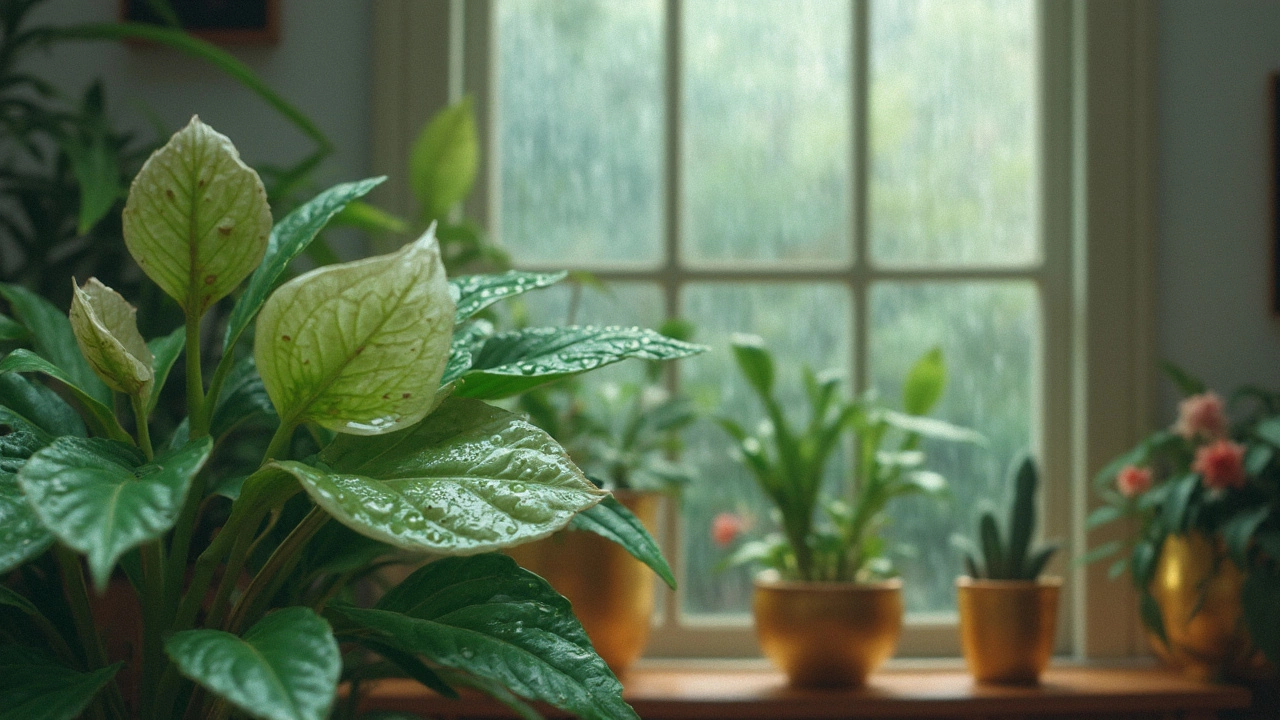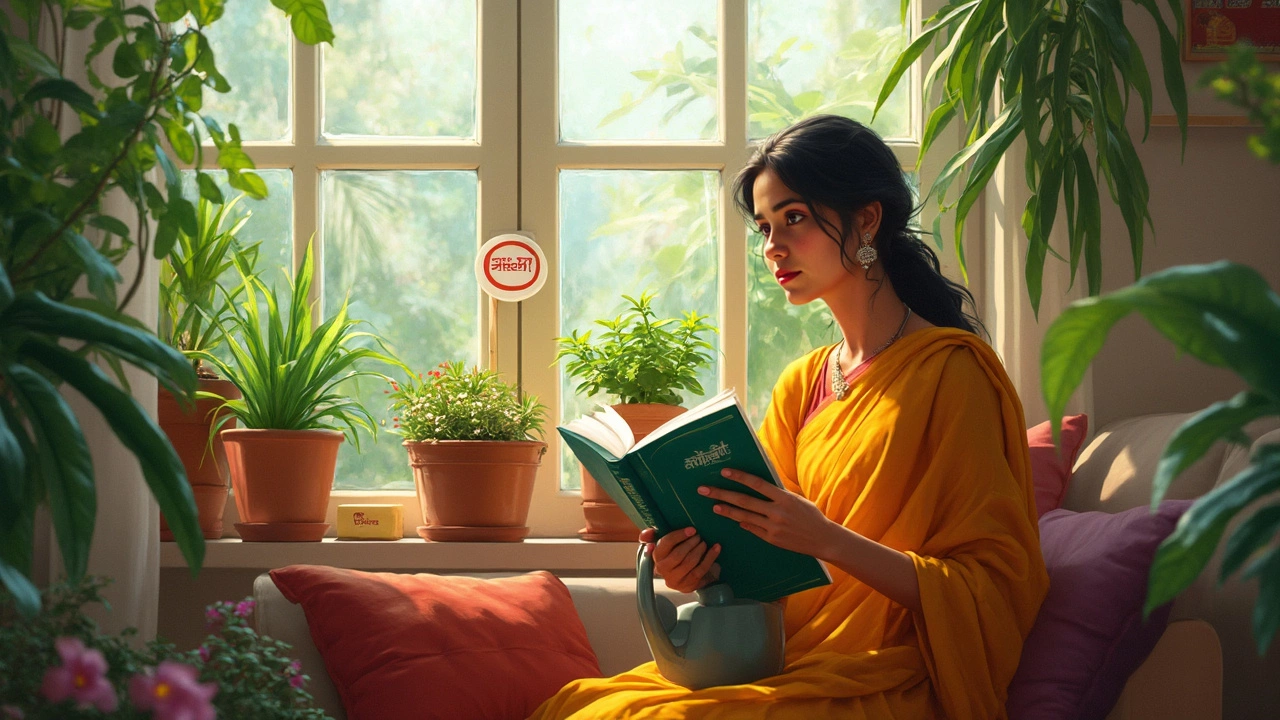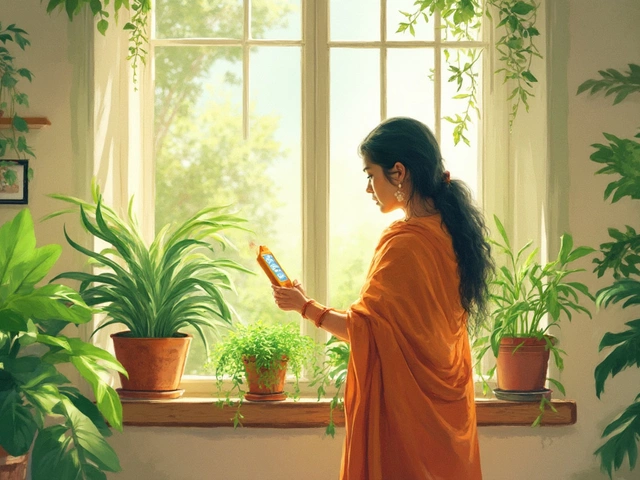Grab a spray bottle and chances are, you’ll want to mist every leafy thing in sight. But here’s the catch—some indoor plants flat-out hate it. It sounds counterintuitive because loads of people swear that misting keeps houseplants happy. In reality, not every plant comes from a rainforest, and for quite a few, misting just causes headaches, not humidity.
If you’ve noticed crispy brown patches, stubborn spots, or funky fuzzy growth on your leaves after misting—there’s probably a good reason. Certain plant groups (looking at you, succulents!) treat any water left sitting on their leaves like a slow-motion disaster. Instead of doing them a favor, you're setting up the stage for leaf rot, fungus, or worse. Knowing which favorites prefer dry leaves over daily spritzing is the first step to keeping your indoor jungle in top shape.
- Why Misting Isn’t for Every Plant
- Problem Plants: Who Hates the Spray
- What Happens If You Mist the Wrong Plant
- Better Ways to Raise Humidity
- How to Spot Misting Damage
- Easy, Responsible Watering Tricks
Why Misting Isn’t for Every Plant
It’s easy to assume all houseplants would enjoy a light mist, especially when you see tropical-looking leaves. But the truth is, misting isn’t a one-size-fits-all trick. What actually matters is where the plant comes from and how its leaves handle water. For some plants, especially those from dry climates or with certain leaf textures, spraying water isn’t just pointless—it can be downright harmful.
Most folks grab the spray bottle to boost humidity or help plants “feel at home.” Trouble is, regular misting only gives a short boost to local air moisture—for about 5 or 10 minutes. After that, humidity levels drop right back down. If the real aim is to raise humidity, you’ll get better results with a humidifier, grouping plants together, or using a pebble tray. Even then, some plants just don't want extra moisture on their leaves.
Leaf shape and surface matter a lot too. Fuzzy-leafed plants like African violets, or thick-leafed plants like succulents, hold water in ways that make them prone to rot and disease when sprayed. Orb-shaped water droplets can even act like tiny magnifying glasses, burning or spotting the leaves in strong light. So when it comes to plants not to mist, you’re not just being picky—you’re actually protecting your plant’s health.
Check out how different types of plants respond to misting in the table below:
| Plant Type | Natural Habitat | Response to Misting |
|---|---|---|
| Succulents (e.g. jade, aloe) | Arid/desert | Can cause rot and fungal spots |
| Ferns (e.g. Boston fern) | Tropical/woodland | May benefit slightly but not long-term |
| Orchids | Tropical | Roots need humidity, but leaves often don’t need misting |
| African violets | Tropical forest floor | Water spots and rot on fuzzy leaves |
| Philodendrons | Tropical | Generally tolerate, but not required |
The takeaway? Not every indoor plant is begging for a mist. Instead of reaching for the spray bottle first, get to know what your plant’s leaves need. Most will thank you for it.
Problem Plants: Who Hates the Spray
Some houseplants just can’t stand a good mist. People often assume every indoor plant wants the rainforest treatment, but in fact, quite a few get upset if you spray their leaves. Here are the big offenders—the ones you should never mist if you want happy, healthy plants.
- Succulents and Cacti: These guys love dry air. Misting them does more harm than good, since water sitting on their leaves can make them rot or get moldy. Their leaves and stems are built to store water, not wear it.
- Fuzzy-leafed Plants: African violets and their cousins look soft and cute, but water on their furry leaves leads to brown spots and sometimes rot. They’re best watered from the bottom.
- Snake Plant (Sansevieria): This tough plant, often called unkillable, hates misting. Its thick leaves trap water easily, making them a prime target for leaf spots and fungal growth if sprayed.
- ZZ Plant (Zamioculcas zamiifolia): This glossy-leafed beauty is getting more popular by the year. But mist it, and you’ll soon see dull, patchy leaves. Its waxy coating helps it keep moisture inside, not outside.
- Jade Plant (Crassula ovata): Another succulent, jade plants respond to misting with leaf spotting and a higher risk of falling leaves.
Here’s a quick heads up—plants with thick, waxy, or fuzzy leaves usually fall into the don’t-mist club. When in doubt, check the leaf structure and the natural habitat of your plant before reaching for the spray bottle.
| Plant Name | Leaf Type | Misting Reaction |
|---|---|---|
| Succulents & Cacti | Thick, waxy | Rot, mold, leaf spots |
| African Violet | Fuzzy | Brown spots, leaf rot |
| Snake Plant | Thick, upright | Fungal leaf spots |
| ZZ Plant | Waxy | Dull spots, leaf damage |
| Jade Plant | Fleshy, smooth | Leaf drop, brown marks |
So, before you mist, always double-check if your plant belongs to the plants not to mist group. Just because a plant is indoors doesn’t mean it needs extra moisture on its leaves. Sometimes, less is much better.
What Happens If You Mist the Wrong Plant
Misting can seem harmless, but for some houseplants, it turns into a real problem fast. The most obvious issue is leaf rot. Plants like succulents and cacti store water in thick leaves—they actually repel extra moisture. If water sits on their surface, it can break down cell walls, causing soft, mushy spots that never really heal. Orchids, too, hate having water left in their crown or the center of their leaves, as it leads to rot within days. Once the rot sets in, the affected parts usually have to be cut off, and the whole plant may decline.
Then there’s fungal disease. Misting certain plants not to mist raises humidity on the surface, but not in the air. Wet leaves, especially in rooms with low airflow, are breeding grounds for fungus. You know those tiny black spots that show up after spraying? That’s often fungal leaf spot or botrytis, and it's not easy to get rid of. Fungi really love wet environments, and once established, they can even spread to healthy leaves nearby.
If you’re wondering what else could go wrong, bacteria enter the chat. Too much leaf moisture can trigger bacterial infections that make leaves yellow, wilted, or streaked with water-soaked patches. These diseases can move fast in a home environment if you keep misting out of habit.
Here's a quick table showing common side effects if you mist plants that don't like it:
| Side Effect | What It Looks Like | Plants Most at Risk |
|---|---|---|
| Leaf Rot | Soft, mushy brown patches; leaves fall off easily | Succulents, cacti, orchids |
| Fungal Spot | Black or brown spots on leaves | Snake plants, ZZ plants, African violets |
| Crown Rot | Center of plant turns black, mushy, or collapses | Orchids, African violets |
| Bacterial Infection | Yellow, water-soaked streaks or patches; leaf drop | Peace lilies, pothos, jade plants |
Some people think misting can boost humidity, but studies from indoor gardening experts have shown that it's temporary—leaves dry quickly, and the air doesn’t retain much extra moisture. Meanwhile, the water left behind sits right where pathogens want it. Watching for these signs can save your plant before a little spray turns into a bigger mess.

Better Ways to Raise Humidity
Misting isn’t the holy grail for boosting humidity like it gets hyped up to be. Even for plants that love a moist environment, the effects of misting only stick around for a few minutes. There are better hacks to keep your home feeling like a comfy jungle for humidity-loving plants—without risking damp spots, leaf rot, or making a mess on your windows.
The indoor plant care community mostly agrees: It’s all about steady, reliable moisture, not quick spritzes. Maryah Greene, a trusted plant consultant, puts it best:
“You’ll help your plants more with a humidifier than by misting. Consistent moisture in the air wins every time, especially in dry indoor spaces.”
If you’re serious about keeping those humidity-loving houseplants happy, here are ways that actually work:
- Use a Humidifier: Plugging in a small, affordable room humidifier does way more for keeping the air moist than misting. Aim for humidity levels between 40% and 60%—this sweet spot keeps most houseplants thriving and stubborn pests like spider mites at bay.
- Group Plants Together: Bunch your plants close! As they breathe (transpire), they create a little pocket of extra humidity for each other. Place a shallow tray of water with pebbles in the center for even more effect—just don’t let roots sit in the water.
- Bathroom Windowsills: High humidity is a given in bathrooms after a shower. Move ferns, prayer plants, or calatheas here, and watch them perk up without any need for misting.
Curious how different choices stack up?
| Humidity Method | Duration of Effect | Ease | Cost |
|---|---|---|---|
| Misting | 5-10 minutes | Easy | Low |
| Humidifier | All day | Plug & play | Moderate |
| Grouping | 6-12 hours | Easy | None |
| Bathroom Placement | Several hours | Easy | None |
Little tweaks—like getting a hygrometer to check your room’s humidity—can help, too. Once you ditch frequent misting for a few of these tricks, you’ll notice healthier leaves and way fewer headaches from mold and leaf spots.
How to Spot Misting Damage
It’s easy to miss the signs at first, but misting damage has some dead giveaways that show up on sensitive plants. If your leaves are looking worse since you started misting, here’s what you should look out for. The faster you spot these problems, the sooner you can save your plants not to mist from further trouble.
- Brown, Crispy Edges: Surprisingly, excess water on the leaves can actually dry them out faster, especially if your plant is in direct sun or in a draft. Instead of perking up, leaves get crunchy or brown along the edges.
- White or Gray Fuzzy Patches: Got a sudden outbreak of fuzziness on your soil or leaves? You’re probably dealing with powdery mildew or a fungal infection. These love moist, stagnant air and wet leaf surfaces.
- Black or Yellow Leaf Spots: Little dark marks with yellow halos usually point to bacterial leaf spot. This spreads way faster when leaves stay wet, and it’s notoriously hard to reverse if you don’t catch it early.
- Wilting or Softness Without Dry Soil: When plant leaves or stems go limp, but the soil isn’t dry, chances are the roots and leaves are suffering from excess moisture above ground—misting is often the culprit.
Keep an eye on spots where water tends to gather, like the grooves of succulents or furry leaves (think African violets). Those areas rarely dry out fast indoors, so any darkening or mushiness there is reason to worry. One odd but useful tip: if your plant smells musty up close, that’s a solid hint rot is setting in thanks to over-misting.
If you spot any of these issues, scrap the misting routine for a while and focus on better airflow. Wipe leaves down with a dry cloth if they’re already damp, and trim off any really damaged parts to halt the spread. A few habit tweaks now can save your plant big headaches down the line.
Easy, Responsible Watering Tricks
Let’s keep plant care simple and smart. Relying on misting for hydration? That’s not nearly enough for most indoor plants, especially those on the list that don’t like moisture sitting on their leaves. It’s all about the soil and the roots, not the surface. So, what works best?
- Stick your finger in the soil up to the first knuckle. If it feels dry, it’s time for water. Too moist? Hold off.
- Water in the morning. This lets any splash on the leaves dry up during the day, lowering the chance of rot or fungus.
- Always use pots with drainage. Plants suffocate fast in standing water; let excess drain out every time.
- Use room temperature water, not cold. Cold water can shock root systems, especially in tropical plants.
- For fussy plants like succulents or cacti, water the soil directly and let it dry out between sessions. No misting needed.
If you want to keep humidity up (for the rainforest crew, not the anti-misting types), do it smart:
- Set a shallow tray of pebbles and water under your plants (without letting the pot sit in water). The evaporation helps, but the roots stay dry.
- Group humidity-loving plants closer together. Plants release a little moisture from their leaves, helping each other out.
If you’re not sure what your plant needs, check for yellowing leaves or drooping. These signs mean “Change something!”—usually the watering schedule.
Check out this quick look at rough watering frequency for some common non-misting plants:
| Plant Type | How Often to Water |
|---|---|
| Succulents | Every 2-3 weeks |
| Cactus | Every 3-4 weeks |
| Snake Plant | Every 2-6 weeks |
| ZZ Plant | Every 2-3 weeks |
| Orchids | Every 7-10 days (check roots!) |
Bottom line: Watch the soil, dodge the urge to mist, and stick to plants not to mist for your “no-spray” crew. Responsible watering is all about paying attention, not just following rules. When in doubt, it’s better to underwater than to drown your green friends.




